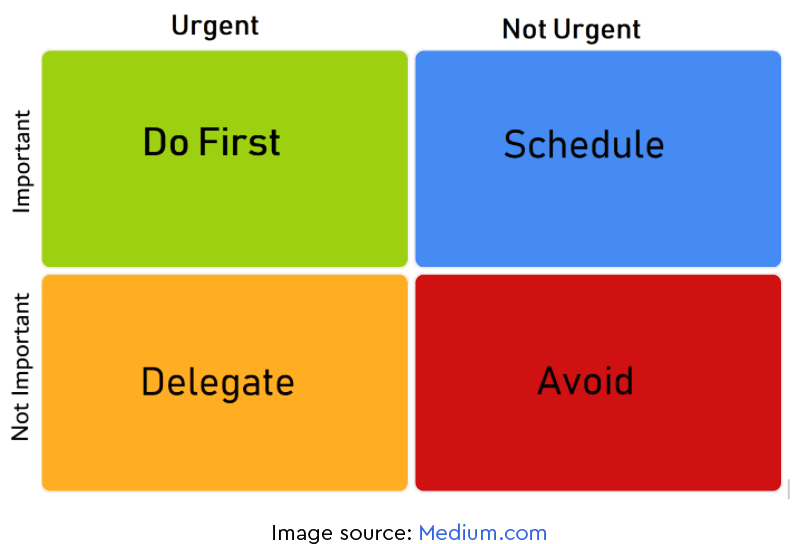In most workplaces, disagreeing with your superior always comes with an element of risk or fear. More importantly, doing it in a constructive and non-condescending way can be pretty complicated. However, despite these challenges, learning to stand your ground and disagree in a respectful manner is an extremely valuable asset we should all master.
In fact, disagreeing with your boss does not by default undermine your job; it could actually put you on the fast track to professional success. Constructive disagreement benefits managers by creating a better environment for problem-solving and ideation, as well as promoting the personal growth of everyone in the team.

Approaching dissent constructively
The way you’ll approach disagreeing with your boss will pretty much revolve around the corporate culture of the organization you’re part of. Ideally, your workplace should be an open environment, where everyone has the freedom to communicate their disagreements. However, that’s not always the case.
Below are a few things to keep in mind when planning how to communicate dissent.
Constructive disagreement builds on trust
Managers aren’t right all the time—and that’s okay—that’s not what they’re paid for. A manager’s purpose is to maximize the efficiency of a team or organization and contribute to achieving its business goals. Like all of us, they are entitled to making mistakes once in a while. But when it comes to correcting their errors, things can get kind of tricky.
Strong employee-employer relations are built on trust. Without this essential element, convincing your manager that your opinion is better than theirs can be pretty complicated.
In a work setting, earning a manager’s trust typically revolves around doing your job well and going the extra mile when you can.
Is this fair? Probably not. Of course, respecting deadlines and having consistent performance does not by default mean that you’re right whenever you disagree with your boss. However, being responsible about work allows you to demonstrate that you care about the organization and that you have its best interests in mind.
Timing is crucial
Often, expressing your disagreement isn’t just about what you say but also when and where you say it. Therefore, if you’d like to suggest to your manager that they might be wrong in a decision they’ve recently made, it’s important to think the timing through very carefully.
Hierarchies in organizations are necessary to establish a sense of internal control and provide everyone with clarity in regards to the chain of command. There is a very specific power dynamic between a manager and her employees. Publicly criticizing the decisions of a superior can be treated as a threat to the existing hierarchy, which is the opposite of constructive.
More importantly, our brains are incredibly susceptible to negative feedback. Most of us will instinctively feel intimidated, defensive, shocked, and embarrassed. None of these emotions is a good foundation for building a fruitful, long-lasting professional relationship.
Even if the criticism is warranted, it’s important to keep in mind that evolution has made our brains hardwired to react very sharply to negative feedback. We’re really good at learning from bad experiences and pretty bad at learning from the good. Therefore, consider scheduling a private meeting to point out the things you disagree with.
However, it’s important to underline that writing an email won’t yield the same results as scheduling a meeting. Research suggests that when presented with written arguments, people are typically more dismissive of them compared to in-person interactions.
Verbal communication is a more empathetic communication medium. It’s much easier to relate to other people’s experiences when they’re presented to us in person. Verbal interactions are much more humanizing compared to written ones.
However, don’t hesitate to follow up an in-person meeting with a roundup email if you find that documenting it is important.

Pick your fights
Expressing your disagreement with your manager often comes with a certain element of risk and reward. Sometimes it’s worth pointing out that they made a mistake because it will prevent the company from losing money or customers. There are, on the other hand, disagreements that are all risk and no reward, which brings us to our next point—not all arguments are meant to be won and not all concerns are meant to be voiced.
More importantly, you’ll probably lose some arguments that were well worth the risk. If that happens, it’s absolutely essential to accept your defeat with grace. Being sour about a decision that wasn’t in your favor will only damage your relationship both in the short and long run.
It’s also a good idea to show that you support your manager’s decision after your idea was turned down. This is suggestive of psychological maturity and presents you as a team player—both critical qualities in business and for a person aiming to themselves a manager one day.

Listen and augment
In a work setting, many disagreements aren’t about the goals that a business should pursue but rather the means of achieving them. An essential part of a constructive and civil disagreement is reminding the other party that you’re on their side and that you’re trying to complement their solution rather than discredit it.
In order to do so, it’s important to start the conversation by stating the things you agree with and why you agree with them. Instead of pointing out the flaws in their reasoning, mention some of the perspectives that they failed to take into account. This is a much softer and constructive form of dissent.
This approach is very effective because you aren’t actually disagreeing with your manager. Instead, you’re broadening their viewpoint, allowing them to make sounder and more informed decisions.
Here’s an example of how this approach can be put into practice: “I agree, we definitely need to invest more into the usability testing of our product, given the low engagement rates. But we’re also facing the risk of hitting diminishing returns on our testing. What if we allocated more money to user research?”
Package dissent with solutions
Often, simply disagreeing with someone might not be enough. People, especially in business settings, are looking for solutions—and complementing your dissent with a way to address the problem at hand better might be received in a much more agreeable manner. Approaching disagreements this way will accentuate your critical thinking and problem-solving skills, making it harder to bluntly dismiss your disagreement.
More importantly, thinking about solutions beforehand allows you to empathize with your manager and understand their point of view, especially if you’re not in a decision-maker position. In many cases, thinking from a manager’s standpoint can help you understand their thought process better, thus eliminating the need to disagree with them
Obtain an invitation
While suggesting that a manager’s decision might be flawed in one way or another, it’s essential to understand whether there’s actual room for dissenting opinions around the decisions that have already been made, more so when these decisions come from C-suite management. So before you choose to take the risk of openly disagreeing with your supervisor, make sure to obtain an invitation to do so.
This invitation may not be explicit, which is why it’s best to carefully analyze their tone and what they say to gauge whether your opinion is welcome at all.
If you strongly disagree on a subject matter and you haven’t really received anything that resembles an invitation, consider asking them for it. Something along the lines of “Are you willing to hear a different opinion on this?” should do the trick. This will allow your manager to provide you with a clear answer regarding their openness to dissent on the subject at hand.

Why you should disagree more
It’s critical to remember that disagreeing with people is an inevitable and absolutely healthy part of our social and professional lives—we can’t really agree on everything all the time. Unfortunately, dissent is kind of taboo in business settings, and disagreements come with a lot of risk-taking. This risk can be managed effectively by being calculated, constructive, and polite while you’re doing it.
When done correctly, disagreements can come with a wide array of professional benefits. Here are some of them.
Opportunities to learn and grow
While disagreements can often be uncomfortable and nerve-wracking, it’s an excellent opportunity for growth. They allow us to learn more by listening and incorporating valuable feedback from peers and superiors, enabling us to evolve as professionals.
Businesses will also benefit from a culture that favors open communication, the free exchange of ideas, and constructive disagreement because these factors provide the necessary grounds for innovative and diverse ideas.
When communication is a one-way street, this benefits no one but the managers’ egos.
Improved relationships
We tend to believe that disagreements, by default, harm relationships at work—that’s only true. Destructive conflict will probably do that, yet constructive ones will most likely strengthen the bond you have with a colleague.
Working through a conflict is a complicated task, and it takes two to do that. When both parties manage to settle an argument, they will feel closer to them and get a better understanding of each other.
This may sound easy to do, but we need to bear in mind that most of us are slightly biased when we’re in the middle of a polarizing conversation. Ironically, what in theory seems to be the easiest way to avoid disagreements at work also happens to be the most challenging in practice—listen to them carefully and intently. If you’re looking to go the extra mile—consider explicitly stating that you’re hearing them.
Higher job satisfaction
Having the freedom to constructively disagree with peers and superiors is an essential factor in a person’s happiness at work and their satisfaction with their accomplishments.
Instead of constantly worrying about the repercussions of disagreeing with someone, people who learn to dissent constructively can simply enjoy being transparent and honest about their professional standpoints.
Conclusion
Disagreeing with people is tough. Doing it constructively is even tougher. On the bright side, learning this skill will help you grow professionally, improve relationships with your peers at work, and be happier with your job.































































